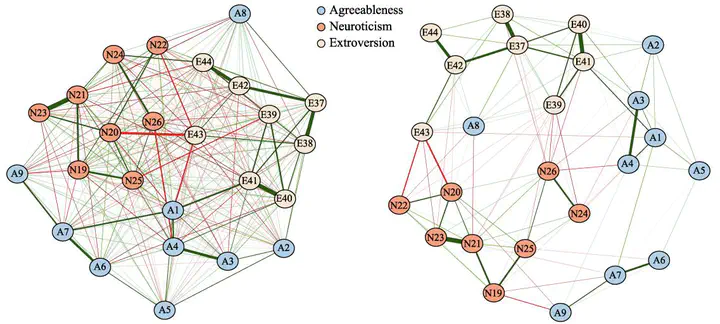 Image credit: Fig1
Image credit: Fig1
Abstract
Network analysis models (or Network Psychometrics) have been widely used in psychology research in recent years. Unlike latent variable models which conceive observable variables as outcomes of unobservable latent factors, network analysis models apply the graph theory to construct a network to depict the associations among observable variables. The observable variables are treated as nodes and the associations between them are treated as edges. As such, network analysis models reveal the relationships among observable variables and the dynamic system resulted from the interactions between these observable variables. With indices reflecting individual nodes’ characteristics (such as centrality) and network structural characteristics (such as small-worldness), network analysis models provide a new perspective for visualization and for studying various psychological phenomena. In the past decade, network analysis models have been applied in the fields of personality, social, and clinical psychology as well as psychiatry. Future research should continue to develop and improve the methods of network analysis models, making them applicable to more types of data and broader research fields.